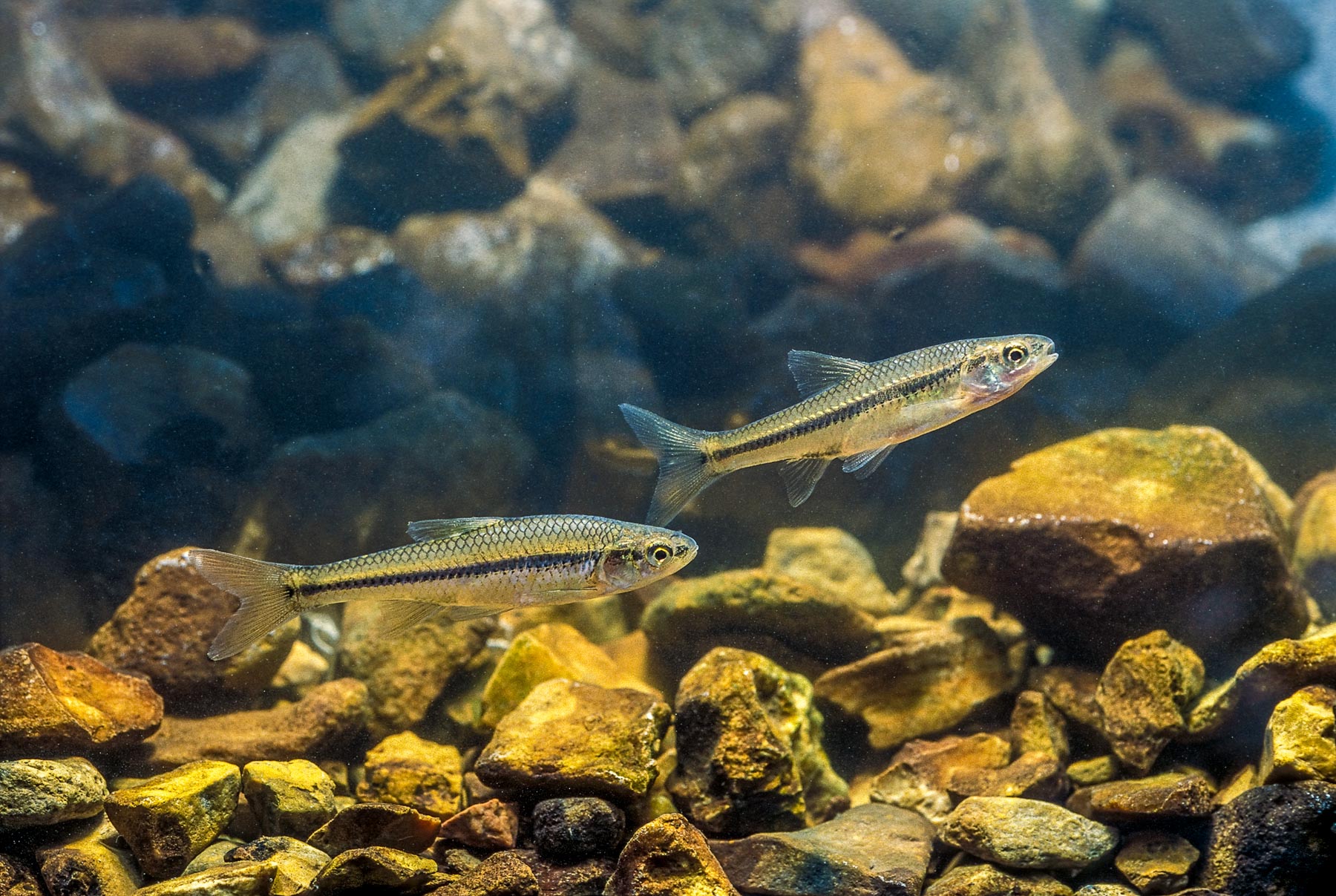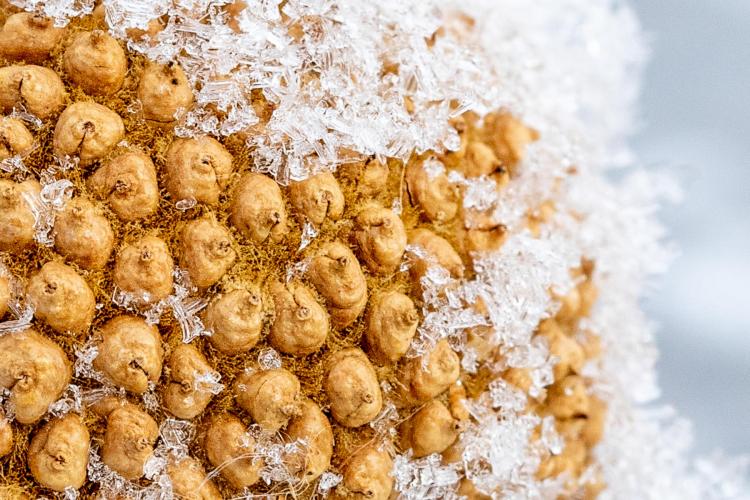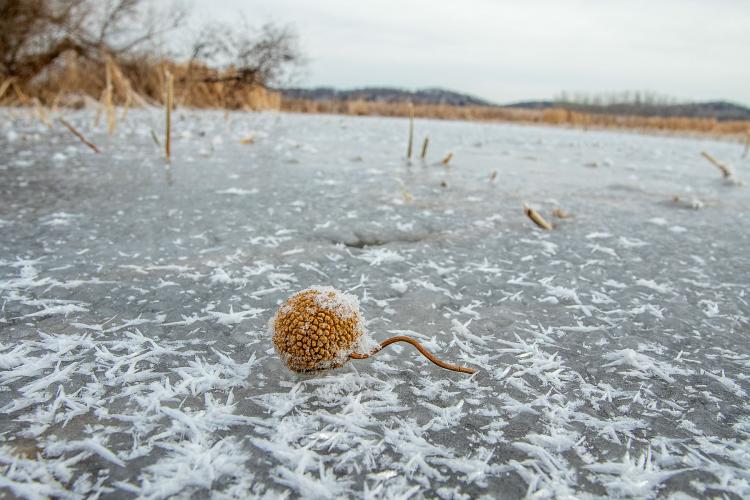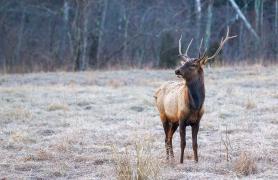MDC Reports Successful Bear Season
Hunters harvest 12 bears during historic season
During the state’s inaugural bear hunting season, Oct. 18–27, hunters harvested 12 black bears from the three identified zones. More than 6,330 hunters applied for 400 permits for the season with the maximum total harvest for the season being 40 bears.
“This was an incredibly successful first bear hunting season for Missouri given that we have a highly regulated season, that bears in the state are widely distributed throughout some pretty rugged wilderness, and that many hunters had never hunted bears before,” said MDC State Furbearer and Black Bear Biologist Laura Conlee. “A harvest of 12 bears in our first season is testament to the hunters. Bear hunting is an extremely challenging endeavor, especially under the framework that we established. This was a new experience for many hunters, and they put in the work to be successful and take advantage of this new hunting opportunity.”
Conlee added that MDC took a conservative approach in developing its bear hunting regulations.
“Our highly regulated and limited season included a sustainable maximum harvest of 40 bears, which is about 5 percent of our total bear population,” Conlee said. “We also prohibited baiting and the use of dogs, limited hunting to 10 days, and restricted the number of hunters who could participate. With any new season, it is difficult to predict hunter success, so we took a conservative approach to limiting the number of hunters and length of the hunting season to ensure a sustainable harvest in each bear management zone.”
Give a Holiday Gift Back to Nature
MDC foresters remind you not to throw that cut Christmas tree into the trash after the holidays. Recycle it!
Many communities have a Christmas tree recycling program. If your community is not among them, there are several creative ways to make further use of your tree.
Place the tree in the backyard to offer cover for wildlife or under bird feeders to provide nesting locations in the branches. Add some post-holiday treats as ornaments by coating pinecones with peanut butter and adding bird seed.
Have your tree shredded or chipped for mulch, or place cut branches over dormant plants to provide a bit of insulation during the winter and to add organic matter as the needles fall.
You can also sink the tree in a pond to enhance fish habitat by giving them a place to rest, nest, and escape predators. Multiple trees make the best cover so work with friends, family, and neighbors to combine efforts. Anchor the trees with concrete blocks and sink them at a depth of about 8 feet with the trees placed in a row.
If you used a balled live evergreen and your ground is still soft enough to dig, add it to your home landscape for years of enjoyment and wildlife cover.
Winter Trout Harvest Begins Feb. 1
MDC staff have stocked about 80,000 rainbow trout in more than 35 urban area lakes around the state for winter trout fishing. Many of these areas allow anglers to harvest trout as soon as they are stocked, while other areas are catch-and-release until Feb. 1. Find locations at short.mdc.mo.gov/ZF3.
Beginning Feb. 1, all urban area lakes allow the harvest of trout. The daily limit at these locations is four trout with no length limit. All Missouri residents older than age 15 and younger than age 65 must have a fishing permit. All nonresidents over age 15 must have a fishing permit. To keep trout, all anglers regardless of age must have a Missouri trout permit.
Learn more about trout fishing at short.mdc.mo.gov/ZtL.
First Elk Harvested by Archery
Congratulations to Chris Irick, Pleasant Hope, who harvested the first elk by archery methods in Missouri’s modern elk hunting history. Irick took the 6-by-6 bull elk in Shannon County on Oct. 18.
The elk hunting season by archery methods ran Oct. 16–24. The elk hunting season by firearms methods ran Dec. 11–19. MDC issued five permits to hunt elk in 2021. Learn more about elk hunting in Missouri at short.mdc.mo.gov/Ztb.
Apply Online for Spring Managed Turkey Hunts
Missouri youth, archery, and firearms turkey hunters can apply online for 2022 spring turkey managed hunts starting Feb. 1 at mdc.mo.gov/springturkeyhunts. Managed hunt details and application procedures are outlined on the site. Drawing results will be posted starting March 15.
Spring turkey hunting youth weekend for 2022 will be April 9 and 10 with the regular spring season running April 18 through May 8.
Detailed information on spring turkey hunting will be available in MDC’s 2022 Spring Turkey Hunting Regulations and Information booklet, available where permits are sold beginning in February. To learn more about turkey hunting in Missouri, visit short.mdc.mo.gov/Ztu.
Buy Missouri hunting permits from vendors across the state, online at mdc.mo.gov/buypermits, or through the MDC free mobile app — MO Hunting — available for download through Google Play for Android devices or the App Store for Apple devices.
Zachary White
Clinton County
Conservation Agent
The winter months usher in another season of outdoor opportunity — trapping, a long-held tradition in Missouri. Permits to harvest furbearers by trapping methods were first required in 1953. Missouri is fortunate to have a wide range of furbearing species. From larger mammals like coyotes and bobcats to the small and rare long-tailed weasel, our natural areas contain an abundance of furbearers. If you are new to the sport, start out with basic gear needed to trap one or two species. For guidance, visit short.mdc.mo.gov/Zvx. The Missouri Trappers Association is a good resource for new trappers. To find out more, visit missouritrappers.com.
For more information about trapping, seasons, and permits, check out A Summary of Missouri Hunting and Trapping Regulations 2021 at short.mdc.mo.gov/ZtA.

Endangered
Topeka Shiner
The U.S. Fish and Wildlife Service (USFWS) listed the Topeka shiner as a federally endangered species in 1998. Topeka shiners inhabited the western tallgrass prairie region of the Midwest from Missouri and Kansas to South Dakota. It occurred in headwater streams of central and northern Missouri but is now limited to two isolated, native populations.
Why It’s Imperiled
Topeka shiners have declined dramatically due to habitat destruction, reduced water quality, altered stream hydrology, barriers to fish movement, and extreme weather, including droughts and floods.
MDC Restoration Efforts
Topeka shiner restoration began in 2013 in the Grand River watershed. Topeka shiners were reintroduced during 2013–2017 into Little Creek and East Fork Big Muddy Creek. Monitoring showed survival, reproduction, and expanded distribution. These experimental populations persist today without additional stocking.
What Can You Do?
Avoid activities that reduce water quality, encourage natural stream flows and streamside vegetation, and follow best management practices for projects near streams..




Sycamore Seed Ball
Sycamore trees fruit from September through October in the form of 1–1½ inches-wide solitary seed balls, which persist through winter. Each ball droops on a 3–6-inch-long stalk and contains hundreds of seeds. The seeds, loosely held together, disperse on the wind, propelled by hairs attached to each one. Birds will feed on the seeds, although they are not preferred. By spring, seed balls dry up and fall to the ground.
Also In This Issue

Serving Nature and You: Fiscal Year July 1, 2020 – June 30, 2021
And More...
This Issue's Staff
Stephanie Thurber
EDITOR
Angie Daly Morfeld
ASSOCIATE EDITOR
Larry Archer
PHOTOGRAPHY EDITOR
Cliff White
STAFF WRITERS
Kristie Hilgedick
Joe Jerek
Dianne Van Dien
DESIGNERS
Shawn Carey
Marci Porter
PHOTOGRAPHERS
Noppadol Paothong
David Stonner
CIRCULATION MANAGER
Laura Scheuler






















